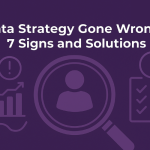- Introduction
- 4 Key factors principles for b2b email subject lines
- 6 psychological strategies for more clickable email subject lines
- Your guide to effective B2B email subject lines
- 10 top-performing email subject lines and their analysis
- A comprehensive collection of 100 B2B email subject lines categorized
- Customization and segmentation
- Advanced email subject line techniques
- Conslusion
Introduction
The significance of an email subject line in the B2B sales process is paramount. Serving as the initial point of contact, its role in determining whether an email piques interest or gets lost in an overflowing inbox is critical. In an environment where attention is a scarce commodity, the ability to stand out becomes essential. This blog focuses on crafting email subject lines that not only grab attention but also prompt action.
Additionally, the contribution of email list providers in this equation is vital. These providers do more than supply a list of contacts; they offer access to a specifically targeted audience. This combination of engaging subject lines and precisely targeted email lists transforms standard B2B communication into an effective sales mechanism.
Quick Tip:
For a seamless way to acquire valuable insights on purchasing email marketing leads, visit DataGenie’s comprehensive guide on “Everything you need to know about buying email marketing leads“.
4 Key principles for B2B email subject lines
Creating email subject lines that resonate with a B2B audience involves more than just clever wording. It requires a strategic approach guided by four fundamental principles:
- Clarity above all: The primary goal of any subject line is to convey the email’s purpose clearly. Ambiguity or misleading phrases can lead to mistrust and lower open rates. A clear, concise subject line sets the right expectations, ensuring that recipients know exactly what the email contains.
- Sparking curiosity: While clarity is crucial, so is the ability to pique the recipient’s curiosity. The best subject lines strike a balance between being informative and intriguing, prompting recipients to explore further. A well-phrased question or a hint at valuable information within can be effective tactics.
- Authenticity and honesty: In a world where inboxes are bombarded with marketing messages, authenticity stands out. Subject lines should reflect the actual content of the email and align with the brand’s voice. Overpromising or using hyperbolic language can harm credibility.
- Avoiding spam triggers: Certain words and phrases can trigger spam filters, causing emails to be lost in junk folders. Avoiding overly salesy language, excessive use of capital letters, and multiple exclamation marks can help ensure that emails reach their intended audience.
By adhering to these principles, B2B email subject lines can effectively capture attention, build trust, and lead to higher open rates.
6 Psychological strategies for more clickable email subject lines
To truly engage a B2B audience, understanding the psychological triggers that drive email opens is critical. Here are six strategies based on psychological principles that can make email subject lines more engaging:
- Reciprocity principle: People tend to return favours. Offering something of value, like a helpful tip or exclusive insight in your subject line, can create a sense of obligation, encouraging recipients to open the email.
- Principle of scarcity: The fear of missing out (FOMO) is a powerful motivator. Subject lines that suggest limited availability or time-sensitive opportunities can drive higher open rates.
- Authority appeal: Establishing credibility in the subject line can build trust. Using industry-specific data or referencing thought leadership can signal expertise and authority.
- Consistency and commitment: People like to act consistently with their commitments and values. Subject lines that align with the recipient’s known interests or past behaviours can tap into this desire for consistency.
- Liking – the familiarity factor: We are more likely to engage with people and brands we like and relate to. Personalizing subject lines to reflect the recipient’s preferences or industry can foster a connection.
- Social proof: People often look to others when making decisions. Subject lines that include social proof, like customer testimonials or user statistics, can persuade recipients to open the email, curious about the popular choice.
Implementing these psychological tactics in email subject lines can significantly increase the likelihood of your emails being opened and read by your B2B audience.
Your guide to effective B2B email subject lines
For B2B marketers, the subject line is a critical element in email campaigns. Here’s a step-by-step guide to ensure your subject lines are both engaging and effective:
- Understand your audience: Knowing your audience is the first step. What are their needs, challenges, and interests? Tailoring your subject line to address these points increases relevance and engagement.
- Conciseness is key: Keep your subject lines short and to the point. A concise subject line is easier to read, especially on mobile devices, and can convey your message more effectively.
- Use action-oriented language: Encourage action by using verbs that inspire the reader to act. Words like ‘discover’, ‘achieve’, or ‘learn’ can be more motivating than passive language.
- Personalize when possible: Personalization can go beyond just including the recipient’s name. Tailoring the subject line to reflect the recipient’s industry, role, or recent interactions with your brand can make it more relevant and engaging.
- Test and optimize: Use A/B testing to try out different subject lines and see what resonates best with your audience. This data-driven approach can refine your strategy and improve open rates over time.
- Avoid overused phrases: Steer clear of clichés and generic phrases that can make your email look like spam. Be original and authentic in your approach to stand out.
- Monitor performance: Regularly review the performance of your email subject lines. Look at open rates and other relevant metrics to understand what works and what doesn’t, and adjust your strategy accordingly.
By following these steps, you can create B2B email subject lines that not only capture attention but also align with your overall marketing strategy and goals.
10 Top-performing email subject lines and their analysis
Expanding our analysis, here are ten top-performing email subject lines, each illustrating fundamental principles that drive engagement in B2B communication:
- “Meet your goals with streamlined solutions”:
Directly addresses the recipient’s aspirations, suggesting efficiency and ease. - “Exclusive insights: industry report 2024”:
Creates a sense of urgency and privilege, offering tangible value. - “Success story: how [client name] overcame [challenge]”:
Uses storytelling and social proof to pique interest in overcoming similar challenges. - “Sast chance: secure your spot in our webinar”:
The urgency of ‘Last Chance’ coupled with the exclusivity of securing a spot compels prompt action. - “New feature alert: [product] just got better”:
Sparks curiosity about improvements to an already useful product. - “Unlock [industry] secrets: download your guide now”: Promises insider knowledge, encouraging immediate action with ‘Download Now’.
- “[First Name], your customized plan is ready”:
Personalization with the recipient’s name and the allure of a customized solution. - “Achieve [specific goal] with our updated toolkit”:
Targets a specific goal that resonates with the audience, promoting a practical resource. - “Join leaders: [event name] registration ends soon”:
Invokes the fear of missing out on an exclusive event, urging quick registration. - “Case study: [industry] innovations by [company]”:
Offers real-world examples of innovation, appealing to those interested in industry trends.
Each of these subject lines demonstrates how combining elements like personal benefit, exclusivity, urgency, and curiosity can effectively capture attention and encourage email opens.
A comprehensive collection of 100 B2B email subject lines categorized
To aid B2B marketers in crafting effective email campaigns, we present a range of thoughtfully categorized email subject lines. These categories are tailored to various communication strategies and marketing objectives, ensuring that you can find the perfect fit for your specific needs
Creating urgency
- “Final Reminder: [Offer] Ends Tonight!”
- “Urgent Update: [Industry] Regulations Changing Soon”
- “Act Now: Limited Seats for [Event/Workshop]”
- “Deadline Approaching: [Offer/Opportunity] Closes Soon”
- “Hurry! Last Chance to Grab [Offer/Deal]”
- “Time-Sensitive: Exclusive [Product/Service] Offer”
- “Limited Time: Unlock [Special Feature/Discount]”
- “Rapid Response Required for [Opportunity/Event]”
- “Closing Soon: [Offer] Ends in [Timeframe]”
- “Alert: [Product/Service] Availability Limited”
Sparking curiosity
- “Did You Know This About [Industry Trend/Statistic]?”
- “Uncover the Secrets to [Business Success/Strategy]”
- “What Every [Job Title] Should Know About [Topic]”
- “Mystery Solved: [Industry] Success Strategies Revealed”
- “Curious About [Topic]? Find Out More”
- “Behind the Scenes: [Industry/Company] Insights”
- “The Truth About [Common Myth/Perception]”
- “Unlocking the Potential of [Product/Service]”
- “Discover What Sets [Product/Service] Apart”
- “The Hidden Benefits of [Strategy/Tool]”
Offering solutions
- “Solve [Common Problem] with This [Product/Service]”
- “Streamline Your [Process] with Our [Tool/Resource]”
- “Effortless Solutions for [Business Challenge]”
- “Overcome [Obstacle] with [Solution]”
- “Simplifying [Complex Process] for [Industry/Role]”
- “Your Answer to [Frequent Question/Challenge]”
- “Transform [Aspect] with [Product/Service]”
- “Eradicate [Issue] with Our [Solution]”
- “Navigating [Challenge] with Ease”
- “Revolutionize [Aspect] with [Innovation/Solution]”
Highlighting benefits
- “Boost Your [Metric] by [Percentage] with [Product]”
- “Enhance Your [Skill/Process] in Just [Timeframe]”
- “Maximize ROI with Our Proven [Strategy/Tool]”
- “Elevate Your [Aspect] with [Product/Service]”
- “Achieve [Goal] Faster with [Solution]”
- “Improve [Metric] with Our [Tool/Service]”
- “Experience the Power of [Product/Service]”
- “Advance Your [Skill/Process] with [Tool]”
- “Gain [Benefit] with Our [Product/Service]”
- “Optimize [Process] for Better [Results]”
Personalization and engagement
- “[First Name], Your Custom Strategy Awaits”
- “Tailored Insights for [Company Name]”
- “Your Personalized [Industry] Report is Ready”
- “[First Name], Discover Your [Product/Service] Benefits”
- “Customized [Solution] Just for [Company/Industry]”
- “Handpicked Solutions for [Company/Role]”
- “Designed for You: [Product/Service] for [Specific Need]”
- “Your Exclusive [Offer/Discount] Awaits”
- “Personalized Approach to [Challenge/Solution]”
- “Crafting [Solution] to Fit Your [Specific Requirement/Need]”
Social proof and testimonials
- “See How [Well-Known Company] Improved [Metric] with Us”
- “Client Spotlight: [Company’s] Success Story”
- “Join [Number] of Satisfied Customers in [Industry]”
- “Real Results: How [Product/Service] Helped [Company]”
- “Case Study: [Company] ‘s Transformation with [Product]”
- “[Industry Leader] ‘s Top Choice for [Solution]”
- “Why [Company] Chooses Our [Product/Service]”
- “Success in Action: [Client’s] Story with [Product]”
- “Trusted by [Industry] Experts: [Product/Service]”
- “Proven Success: [Product/Service] in [Industry]”
Invitations and announcements
- “You’re Invited: Exclusive [Event/Webinar] for [Industry] Leaders”
- “Announcing Our Latest [Product/Feature] for [Industry/Sector]”
- “Join Us for the Grand Launch of [Product/Service]”
- “Exclusive Access: Be the First to Experience [Product/Feature]”
- “Invitation: VIP Event for [Industry] Professionals”
- “New Release: [Product/Service] Unveiled”
- “Be Our Guest at [Event] – A [Industry] Gathering”
- “Special Announcement: [Product/Service] Upgrade”
- “You’re Invited to Explore [New Feature/Product]”
- “Join the Revolution: [Product/Service] Launch Event”
Educational and informative
- “Learn the Top [Industry] Trends for [Year]”
- “Free eBook: Mastering [Skill/Topic]”
- “Webinar Alert: Advanced Strategies for [Topic]”
- “Insights on [Topic]: Transform Your [Aspect]”
- “Masterclass: Elevate Your Skills in [Area]”
- “Exclusive Workshop: [Skill/Strategy] for [Industry]”
- “Guide to [Topic]: Essential Tips for [Audience]”
- “Deep Dive: Understanding [Complex Topic]”
- “Your Roadmap to [Skill/Strategy] Success”
- “Expert Roundup: Top Tips on [Topic]”
Follow-ups and re-engagement
- “Missed Our Last [Event/Webinar]? Here’s a Second Chance”
- “Following Up: Exclusive Offer for [Company/Individual]”
- “Reconnect with Our Latest [Product/Service Update]”
- “Still Interested in [Product/Service]? Let’s Revisit”
- “We Missed You: Special Offer Inside”
- “Checking In: Updates on [Product/Service]”
- “Let’s Continue Where We Left Off: [Offer/Opportunity]”
- “A Gentle Reminder: Don’t Miss Out on [Offer]”
- “Re-Engage with Our [Product/Service] Enhancements”
- “Welcome Back: See What’s New with [Product/Service]”
Seasonal and timely
- “Start [Season/Year] Right with [Product/Service]”
- “Our [Holiday Season] Gifts to Boost Your [Business Aspect]”
- “Prepare for [Seasonal Event] with These Tips”
- “Seasonal Special: [Offer] for a Limited Time”
- “Year-End Review: [Industry] Insights and Forecasts”
- “Spring into Success with [Product/Service]”
- “Holiday Exclusive: Special [Offer/Discount] Inside”
- “New Year, New [Product/Service]: Transform Your [Aspect]”
- “Season’s Greetings: A Special Offer for [Industry] Pros”
- “Summer Sale: Hot Deals on [Product/Service]”
This comprehensive and categorized collection of email subject lines offers a versatile toolkit for B2B marketers, ensuring that every email campaign can be tailored to specific goals, audience segments, and messaging themes.
Customization and segmentation
Segment identification
Identifying distinct segments within your email list is the first step. Grouping recipients based on shared characteristics ensures that the content is relevant to their specific interests and needs.
Crafting targeted subject lines
Once segments are identified, create subject lines that directly address the unique attributes or interests of each group. This approach ensures higher relevance and engagement.
Data-driven customization
Incorporate data from email list providers to refine your segmentation. This data provides deeper insights into recipient preferences and behaviours, allowing for more precise targeting.
Continuous refinement
Regularly review and adjust your segmentation strategy. As recipient behaviours and preferences evolve, so should your approach to segmentation and customization.
Advanced email subject line techniques
Embracing A/B testing for optimization: A/B testing is essential for determining the most compelling subject lines. By comparing different versions, you can identify which elements most strongly influence open rates. This method involves sending variant subject lines to a segment of your audience and analyzing the results to guide future campaigns.
Utilizing analytics for deeper understanding: Analytics play a crucial role in understanding what resonates with your audience. By examining open rates, click-through rates, and engagement patterns, you gain valuable insights into the preferences and behaviors of your audience, guiding the creation of more effective subject lines.
Continuous improvement through feedback: Incorporating feedback mechanisms into your email strategy allows for ongoing refinement of subject lines. Pay attention to direct responses from your audience and use this feedback to tailor further and improve your email content.
Segment-specific subject line adaptation: Different audience segments may respond to varying triggers. Use analytics to understand these differences and adapt your subject lines accordingly, ensuring they are tailored to the specific interests and needs of each segment.
Trend analysis for timely content : Stay abreast of current trends and incorporate them into your subject lines. This approach ensures your content remains relevant and timely, increasing the likelihood of engagement.
Experimenting with formats and styles: Be bold in experimenting with different formats and styles in your subject lines. Test out questions, statements, or even emojis where appropriate to see what captures your audience’s attention most effectively.
Conclusion: enhancing B2B email campaigns with strategic subject lines and accurate email lists
In this guide, we’ve explored the significance of crafting effective B2B email subject lines, highlighting the importance of customization, segmentation, and the strategic use of data from email list providers. Advanced techniques like A/B testing and analytics are crucial in refining your approach, ensuring each email is a step towards greater engagement and success.
However, the effectiveness of these subject lines is contingent upon reaching the right audience. Accurate and verified email addresses are fundamental to this process. Opting for a reliable B2B email list provider ensures that your carefully crafted subject lines reach the intended recipients, thereby enhancing the potential for conversion. Providers like DataGenie, UpLead, and DataJi offer comprehensive services that include up-to-date, relevant data, advanced segmentation capabilities, and adherence to compliance standards. This combination of strategic subject line creation and quality email lists from trusted providers forms the backbone of successful B2B email marketing campaigns.
By integrating these elements, your email campaigns can consistently capture attention and drive meaningful results, leading to improved open rates and overall engagement.

Elizabeth Jones, Data expert at DataGenie, helps businesses turn data into clear, practical insights. She's great at simplifying complex ideas, making data useful and easy to understand. Elizabeth regularly shares tips on professional networks and actively joins discussions on X (formerly Twitter). Follow her posts on the DataGenie blog for straightforward advice on making data work better for your business.




